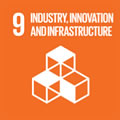Por favor, use este identificador para citar o enlazar a este item:
http://hdl.handle.net/10261/343453COMPARTIR / EXPORTAR:
 SHARE
BASE SHARE
BASE
|
|
| Visualizar otros formatos: MARC | Dublin Core | RDF | ORE | MODS | METS | DIDL | DATACITE | |

| Título: | Long lasting phosphors: SrAl2O4:Eu, Dy as the most studied material |
Autor: | Rojas-Hernández, Rocío E.; Rubio Marcos, Fernando CSIC ORCID; Rodríguez Barbero, Miguel Ángel CSIC ORCID; Fernández Lozano, José Francisco CSIC ORCID | Palabras clave: | Phosphorescent material Afterglow Persistent luminescence Sub-micron size SrAl2O4 |
Fecha de publicación: | ene-2018 | Editor: | Elsevier | Citación: | Renewable and Sustainable Energy Reviews 81 (2018) 2759–2770 2760 | Resumen: | The aim of this review is to present the progress in preparing phosphorescent particles based on the reported research. We highlight the recent progress on SrAl2O4: Eu, Dy particles by describing the advantages and disadvantages of the different synthesis methods. This long-lasting material combines several favorable attributes: is stable, efficient, and less toxic that their predecessors. For that, large attention has been paid to the development of an efficient preparation method of SrAl2O4 doped powders, including sol-gel method, hydrothermal synthesis, laser synthesis, combustion synthesis and solid state reaction. However, many of these techniques are not compatible with large-scale production and with the principles of sustainability. Industrial processing of highly crystalline powders usually requires high synthesis temperatures, typically between 1300 and 1900 °C, with long processing times, especially for solid state reaction. As a result, the average particle size is typically within the 20–100 μm range. This large particle size is limiting for current applications that demand sub-micron particles. The microstructure and size which are controlled through adjusting the experimental conditions have a great influence in the final photoluminescence response. Therefore, much effort has been devoted to exploring new strategies to obtain sub–micrometric particles, avoiding stringent, intricate, tedious, costly, or inefficient preparation steps and intrinsic toxicity or elemental scarcity. Moreover, persistent luminescent nanomaterials have attracted great interest to their potential application in solar cells, biological labeling and imaging and security encode. In addition, we describe the challenges and future of phosphorescent materials in regard to their synthesis, properties and applications. Finally, some further suggestions have been also addressed to enhance its photoluminescence response from the perspective of the synthesis. We believe that such a review can accelerate the developments of SrAl2O4-based materials. | Versión del editor: | http://dx.doi.org/10.1016/j.rser.2017.06.081 | URI: | http://hdl.handle.net/10261/343453 | ISSN: | 1364-0321 | E-ISSN: | 1879-0690 |
| Aparece en las colecciones: | (ICV) Artículos |
Ficheros en este ítem:
| Fichero | Descripción | Tamaño | Formato | |
|---|---|---|---|---|
| Rojas_Long_Syst_Renewable_Sustainable_Energy_Rev_2018.pdf | Postprint | 1,73 MB | Adobe PDF |  Visualizar/Abrir |
CORE Recommender
Este item está licenciado bajo una Licencia Creative Commons



